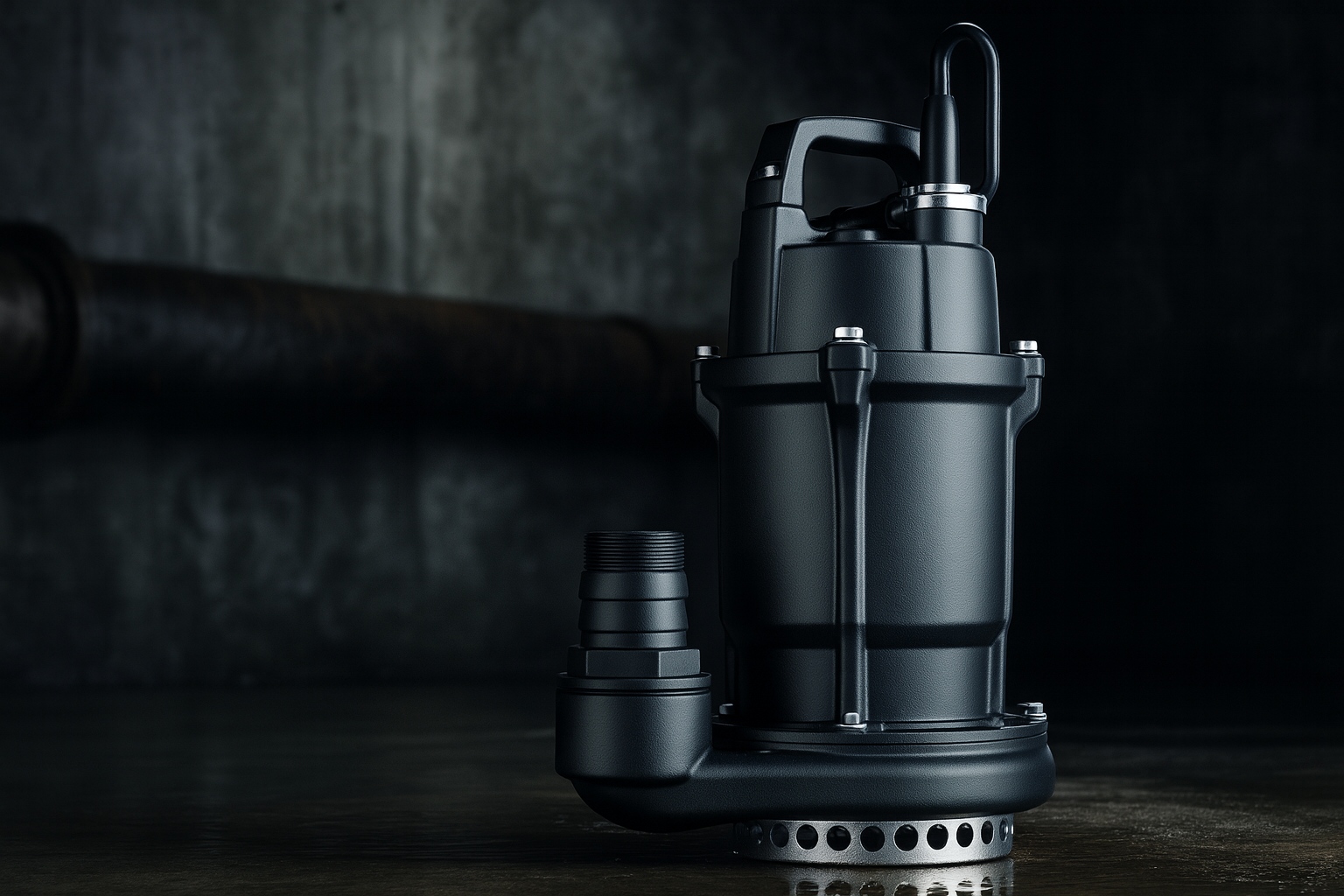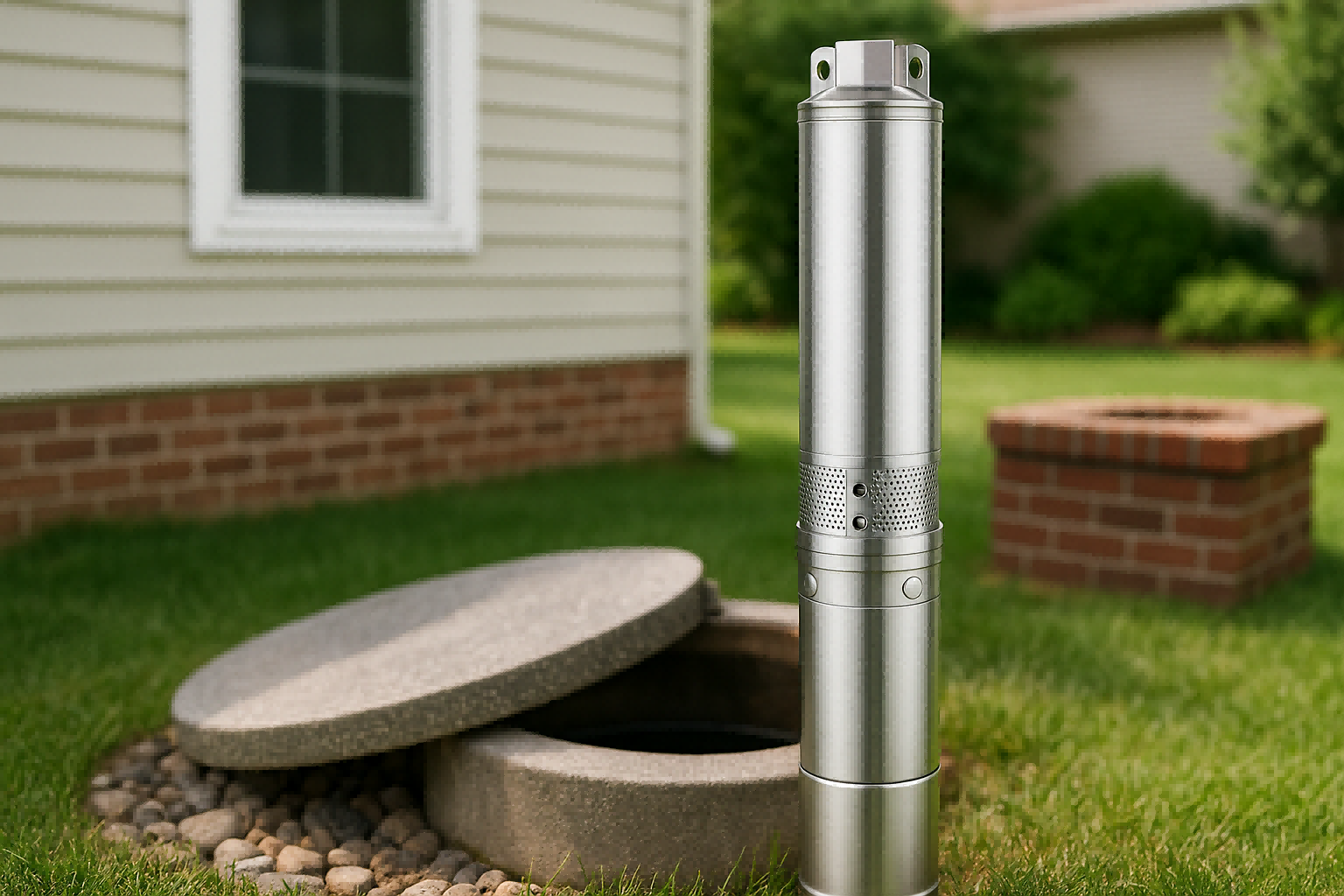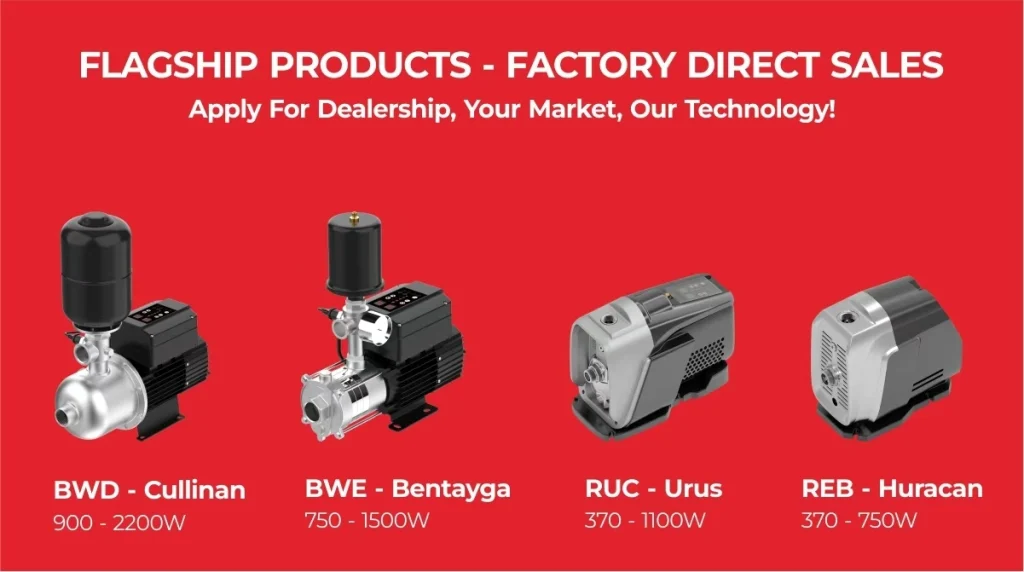Struggling with pump priming or noisy operation?
Your pump choice might be the issue, costing you time and money.
Submersible pumps offer a silent, efficient solution.
Submersible pumps offer major advantages like high efficiency, self-priming, and quiet operation because they work directly in the fluid. However, they also come with higher initial costs and more complex maintenance challenges, making the choice dependent on your specific application and budget.

Choosing the right pump is critical for any fluid management system.
To make an informed decision, it's essential to understand not just the pros and cons, but also the fundamental principles of how these devices operate.
Let's dive into the mechanics first.
How a Submersible Pump Works
Unsure how a pump can operate fully underwater?
This design seems complex, raising questions about safety and reliability.
But it's this very design that makes it so effective.
A submersible pump works by being fully immersed in fluid. An electric motor inside a sealed housing spins an impeller, creating pressure that draws fluid in and pushes it out through a discharge pipe. The surrounding fluid also helps cool the motor.
The genius of a submersible pump lies in its integrated, sealed design.
It’s an entire system engineered to function flawlessly beneath the surface.
This approach eliminates many problems found in pumps that are located on the surface.
To truly grasp its benefits and drawbacks, we must first look at the core components and the step-by-step operational process that defines its performance.
Understanding this inner world reveals why it is the go-to choice for so many demanding jobs.
The Core Components and Their Roles
A submersible pump is more than just a motor that moves water.
It's a collection of precisely engineered parts working in harmony.
Each component has a specific job, contributing to the pump's overall efficiency, durability, and reliability.
- Motor: This is the powerhouse. It is hermetically sealed, meaning it's completely airtight and waterproof. It converts electrical energy into the mechanical force needed to spin the impeller. Modern designs often use highly efficient motors for better performance and lower energy use.
- Pump Housing: This is the protective outer shell. It encases the motor and all internal parts. It must be made from tough, corrosion-resistant materials to survive long-term submersion in water or other fluids without degrading.
- Impeller: This is a rotor that spins at high speed. As it rotates, it creates the force that moves the fluid. The design of the impeller is critical for determining the pump's flow rate and pressure capabilities.
- Diffuser: The diffuser is a stationary component that surrounds the impeller. Its primary job is to slow down the fluid coming off the impeller and convert its high speed (kinetic energy) into high pressure (pressure energy), making the pumping process much more efficient.
- Intake Screen: This is the first line of defense. It's a filter or screen at the bottom of the pump that stops large solids like rocks, sticks, or other debris from getting sucked inside, which could cause a clog or severe damage.
- Seals and Bearings: These are the unsung heroes. A series of seals prevents any fluid from leaking into the sealed motor compartment. High-quality bearings support the motor shaft, reducing friction and ensuring it spins smoothly and quietly for a longer lifespan.
The Operational Cycle Explained
The operation of a submersible pump is a continuous and elegant process.
It all starts with its placement and ends with the delivery of fluid where it is needed.
The cycle is designed for efficiency and automation.
| Step | Description |
|---|---|
| 1. Immersion | The entire pump assembly is submerged in the fluid. This is vital, as it uses the surrounding liquid to cool the motor and eliminates the need for priming. |
| 2. Activation | Power is sent to the motor through a waterproof cable. The motor starts, causing the impeller attached to its shaft to begin rotating at high speed. |
| 3. Fluid Intake | The spinning impeller creates a low-pressure zone at the pump's intake. The higher pressure of the surrounding fluid forces it into the pump through the screen. |
| 4. Pressurization | The impeller's vanes catch the fluid and spin it outward at high velocity. The diffuser then channels this fast-moving fluid, slowing it down to build pressure. |
| 5. Discharge | The newly pressurized fluid flows out of the pump's discharge outlet and up a pipe or hose to its destination, such as a storage tank or irrigation system. |
This entire process happens seamlessly as long as the pump has power and remains submerged.
It explains why these pumps are so effective for deep wells and automated systems where manual intervention is not practical.
Advantages of Submersible Pumps
Are you tired of pumps that lose their prime or create too much noise?
These common problems disrupt operations and create a poor working environment.
A submersible pump solves these issues by design.
Submersible pumps are highly efficient because they push fluid instead of pulling it, which prevents cavitation and eliminates the need for priming. Their underwater operation also makes them exceptionally quiet, offering superior performance with minimal disturbance.
The benefits of using a submersible pump extend beyond just quiet and efficient operation.
Their unique design provides a range of advantages that make them a superior choice for many industrial, agricultural, and residential applications.
These pumps are engineered for reliability and convenience in environments where other pumps would fail.
From their compact footprint to their impressive depth capabilities, submersible pumps offer a robust solution for complex fluid management challenges.
Let's explore these compelling advantages in greater detail.
Superior Efficiency and Performance
The primary advantage of a submersible pump is its exceptional efficiency.
Because the pump sits directly within the fluid, it uses its energy to push the fluid upward rather than using suction to pull it from a distance.
This fundamental difference has a massive impact on performance.
Pushing is inherently more efficient than pulling in fluid dynamics.
This means less electrical energy is wasted fighting against atmospheric pressure and friction in a long suction line.
The direct-push method leads to higher flow rates and pressure capabilities with lower energy consumption compared to a surface pump with the same power rating.
Preventing Cavitation
Cavitation is a destructive phenomenon that occurs when the pressure in a suction line drops too low, causing tiny vapor bubbles to form in the fluid.
When these bubbles collapse against the impeller, they create powerful micro-jets that erode the metal over time, leading to premature pump failure.
Submersible pumps are not susceptible to this problem.
Since the pump is submerged, there is always positive pressure at its intake from the weight of the fluid above it.
This "suction head" ensures the pressure never drops low enough for vapor bubbles to form.
This feature dramatically increases the pump's reliability and lifespan, especially in deep well applications or when pumping fluids with high vapor pressures.
Built-in Self-Priming Capability
A major operational headache with surface pumps is the need for priming.
Priming involves manually filling the pump and suction line with fluid before it can start working.
If any air gets into the line, the pump can lose its prime and stop moving fluid, requiring manual intervention to fix.
Submersible pumps are naturally self-priming.
By being submerged, the pump body is already filled with fluid by default.
It can start operating immediately without any manual setup.
This makes them ideal for automated or remote systems, such as sump pits or well water systems, where the pump needs to turn on and off automatically without a person present.
Disadvantages of Submersible Pumps
Thinking a submersible pump is the perfect solution?
Their high initial price and complex installation can be a barrier.
If a failure occurs, repairs can be costly and time-consuming.
The main disadvantages of submersible pumps are their higher upfront cost and difficult maintenance. Accessing the pump requires pulling it from the fluid, which can be a major job. Any seal failure can also lead to expensive motor damage.
While their advantages are significant, it's crucial to acknowledge the potential downsides of submersible pumps.
No technology is perfect for every situation, and these pumps come with their own set of challenges.
These disadvantages are primarily related to cost, maintenance accessibility, and sensitivity to certain operating conditions.
Understanding these drawbacks is just as important as knowing the benefits.
A balanced assessment will help you determine if a submersible pump is the most practical and cost-effective choice for your specific needs over the long term.
Higher Initial Cost and Installation Complexity
One of the most significant hurdles is the initial investment.
Submersible pumps are generally more expensive to purchase than non-submersible pumps of similar capacity.
The reason for this higher cost is their specialized construction.
They require hermetically sealed motors, waterproof power cables, and corrosion-resistant materials to withstand being permanently underwater.
This advanced engineering and premium material selection add to the manufacturing cost.
Installation can also be more complex and expensive.
For deep well applications, specialized equipment like a rig or crane may be needed to lower the pump, pipes, and cable into the borehole.
This often requires hiring a professional installer, adding to the total upfront expense.
Challenges in Maintenance and Repair
The very feature that makes submersible pumps great—their submersion—also makes them difficult to service.
When a surface pump fails, it is easily accessible for inspection and repair.
If a submersible pump needs maintenance, the entire unit must be pulled out of the well, sump, or tank.
This can be a labor-intensive and messy job, often requiring the same specialized equipment used for installation.
Diagnosing the problem can also be more difficult until the pump is on the surface.
The Criticality of Motor Seals
The integrity of the seals is paramount to a submersible pump’s survival.
These seals are the only barrier keeping fluid from entering the electric motor housing.
If a seal fails, water will leak into the motor, causing a short circuit and catastrophic failure.
Repairing or replacing a water-damaged motor is often so expensive that it's more economical to replace the entire pump.
This makes seal quality a critical factor in the pump's long-term reliability.
Lower-quality pumps may use inferior seals that degrade over time, leading to a much shorter operational lifespan.
This risk underscores the importance of investing in a well-made pump from a reputable manufacturer.
Conclusion
Submersible pumps offer unmatched efficiency and convenience but come with higher costs and complex repairs.
Evaluating your application's specific needs against these factors is key to making the right choice.
FAQs
What is the main advantage of a submersible pump?
The main advantage is high efficiency, as it pushes water instead of pulling it. This design prevents cavitation and eliminates the need for manual priming, saving energy.
Are submersible pumps reliable?
Yes, high-quality submersible pumps are very reliable. Their sealed design protects them from external elements, and being submerged helps cool the motor, extending its operational life.
How long do submersible pumps last?
A well-maintained submersible pump can last from 10 to 15 years. Lifespan depends on build quality, operating conditions, and the properties of the fluid being pumped.
Can a submersible pump run continuously?
Most submersible pumps are designed for continuous operation. The surrounding fluid provides constant cooling, allowing the motor to run for extended periods without overheating.
What happens if a submersible pump runs dry?
Running a submersible pump dry is very damaging. It will quickly overheat because it relies on the surrounding fluid for cooling, leading to motor failure and other component damage.
Are submersible pumps noisy?
No, submersible pumps are exceptionally quiet. Since they operate underwater, the fluid and surrounding earth effectively muffle any noise from the motor and pump operation.
Why are submersible pumps so expensive?
They are more expensive due to their specialized construction. They require a hermetically sealed motor, waterproof cabling, and corrosion-resistant materials to function reliably while fully submerged.
Can a submersible pump be used for dirty water?
Yes, specific types of submersible pumps are designed for dirty water, sewage, and slurry. These models have robust impellers and wider passages to handle solids without clogging.







